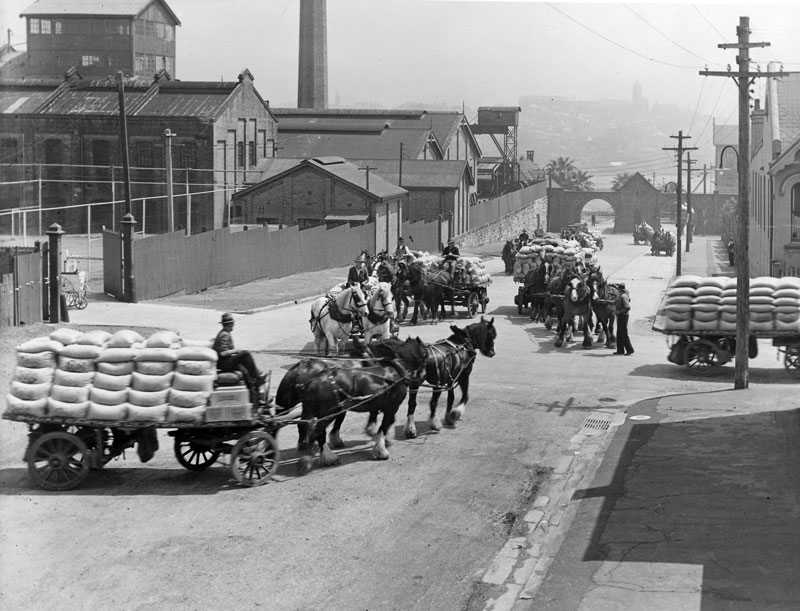McCafferys Hill
Date Built: 2002-2004
Architect: Daryl Jackson Robin Dyke
McCafferys Tower, Mews, Johns Court, The Stables, Chalet, Cliff Top. 17-storey tower, three-and four-storey buildings. Highest point of the peninsula. Overlooks Saunders’ quarries. Site of McCafferys haulage company
McCafferys Hill
1880 - 1910
By the 1870s McCafferys Hill was best known for the Paradise Quarry that Charles Saunders opened in 1860, at what is now the western end of Miller Street. As demand for sandstone mushroomed, Saunders employed more skilled masons, and mechanised the production of immense stone blocks. Teams of Clydesdale horses then pulled these through the peninsula to building sites in the city.
Equally massive change was unleashed in 1875 when CSR built its refinery in Pyrmont. The cartage firm of C. J. McCaffery followed hard on CSR’s heels, under contract to haul raw sugar from the docks to the refinery, and refined sugar to Darling Harbour and the city. Secure in that contract, McCafferys built stables and offices on the hill that bears that name.
From then on McCafferys grew in tandem with a fast-expanding CSR. By 1914, their equipment included 152 horses, thirty-five lorries, nine wagons and forty-four drays; these horse teams and wagons employed many local families. Teams of Clydesdale horses straining up the Jones Street hill from the wharves were a striking sight, often photographed.
As the population grew, a public school was built on John Street: the main block in 1891-2. As well as schooling, it provided amenities: only there could many children shower and bathe.
This area was excavated by the archaeologists Casey and Lowe in the 1990s, and their report is essential reading. They judge that houses were built mainly of stone until the 1860s, when brick replaced it. The quality of construction improved after the 1870s, but these were not very desirable residences. People used cesspits until at least 1875 when sewerage was introduced. Anxious health inspectors continued to find conditions little better than in the rest of the peninsula.
Casey and Lowe reckon that families in these cottages
were usually composed of skilled men who worked nearby in the shipyards, abattoirs and wharves; and their wives who were usually responsible for the upbringing of the children and all stages of the food process and cleaning… Some may have undertaken work in the home, such as sewing, needlework or washing laundry.
The McCafferys ridge may have been more desirable than streets further down the hill, but the movements of horses and drays, and a dairy on John Street, must have given it a decidedly rustic air.









